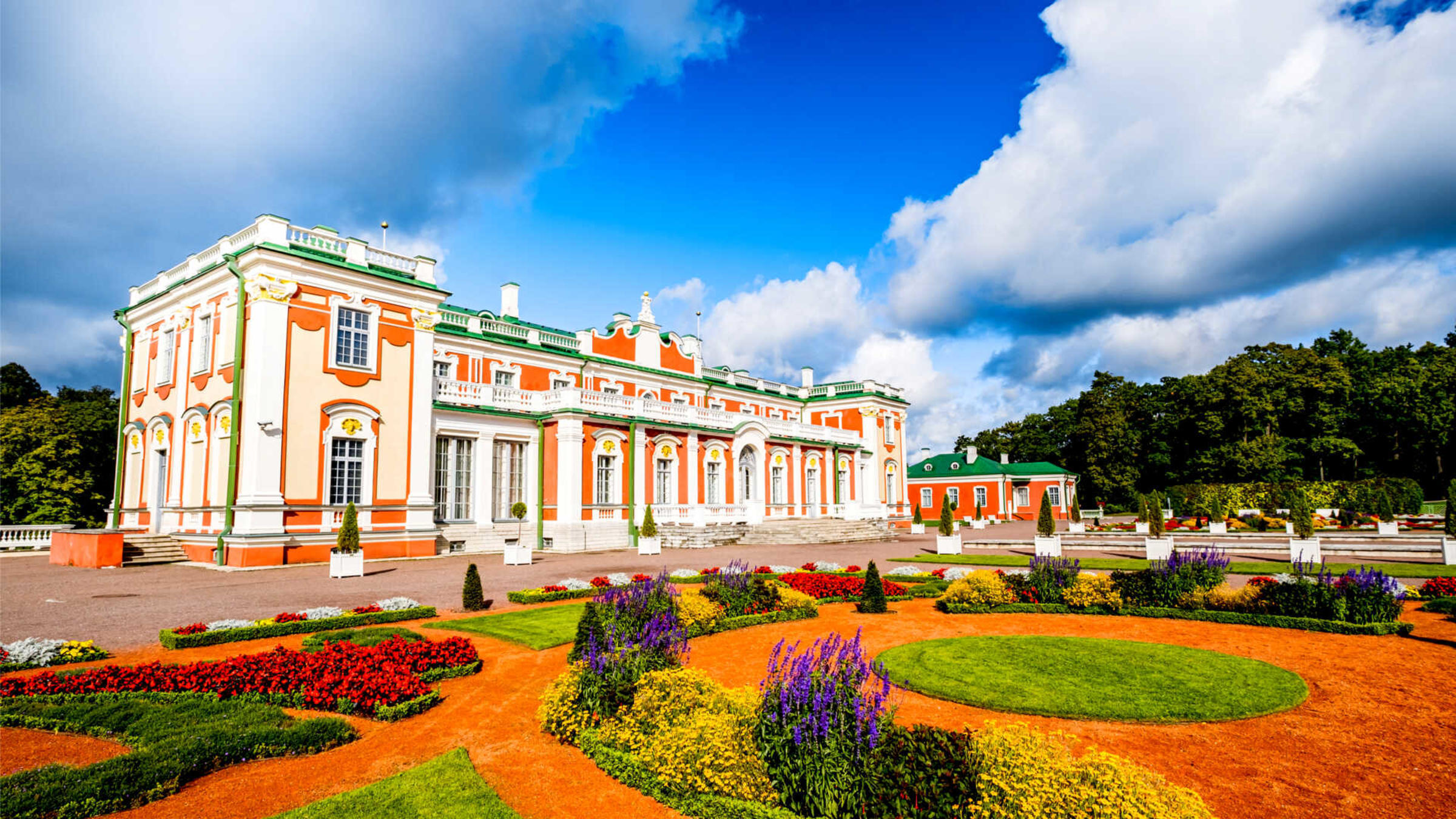The park is also home to 7 museums such as the Mikkeli Museum, Kadriorg Art Museum and KUMU (the Estonian Art Museum), Kadriorg Art Museum, Museum of Eduard Vilde etc. Apart from the Kadriorg Palace, the park also houses other historical buildings such as Castellan House, The Drenteln's Summer Manor, Palace Ice Cellar, Park Pavilion (Lustla) and others.
Kadriorg Park Highlights
• Spend some time in the Kadriorg Park which surrounds the Kadriorg Palace and is the most exceptional urban park in Estonia.
• Take a stroll in the Upper Garden, the Flower Garden and the Lower Garden which is famous for its canals.
• Take a leisure walk in the Japanese Garden with seasonal flowers, stone bridges and water bodies.
• Relax beside the Swan Pond and watch the beautiful swans floating on the water.
• Visit Rose Hill, the largest public rosarium in Estonia and the English Landscape Park with an oak grove hundreds of years old.
How To Reach Kadriorg Park
- By Car: Kadriorg Park is 2.4 km from the city centre, it will take 9 min via the Narva mnt
- route.
- By Bus: Take a bus to Kadriorg Bus Station which is 350 m away from the park. You can reach the park from the bus station with a 4-minute walk
- By Train: Take a train to Tallinn Baltic Station which is 4 km away from the park. You can reach the location from the train station with a 13-minute drive via the Põhja pst route.
- By Boat: If you're arriving by boat, the nearest port is Tallinn Harbour. From there, it's about a 12-minute drive by car via the Ahtri route to Kadriorg Park.
- By Tram: Take a tram to Kadriorg Tram Stop which is 350 m away from the park. You can reach the park from the tram station with a 4-minute walk
Best Time To Visit Kadriorg Park
Kadriorg Park is open year-round for 24 hours a day, allowing visitors to enjoy its beauty in all seasons.
- Best season: The best seasons to visit are spring( March to May) when the weather is warmer and more pleasant for outdoor strolls and flowers bloom making the park lush and vibrant.
- Best Day of the Week: The weekdays are the best days of the week to visit the park when the place is less crowded compared to weekends.
- The best time of the day: Early morning is the best time of the day to visit the park. In the morning, the park has a tranquil ambience and the morning light provides the best photographic views.
Take a stroll in the Upper and Lower Garden
Take a stroll in the Upper Garden or the Flower Garden which is located on two terraces, connected to the palace. Admire the enchanting Flower Garden with its magical fountains, charming ponds and a backdrop of a Mirage Wall with a central cascade and water-spewing mascarons. Look for the intricately shaped Mirage Pond which is hidden behind three rows of trees on the upper terrace.
Take a leisure walk in the Japanese Garden
The Japanese garden has been designed for taking a leisure walk over stone bridges and around water bodies. The original garden was planned to have only plants from Japan. However, the plants could not withstand the local winter weather and had to be replaced with local seasonal variations. Further elements of Japanese gardens such as stones and water were added to the garden.
Relax beside the Swan Pond
Originally called the Lower Pond, the Swan Pond is the most famous of the Kadriorg Park ponds which was initially an islet with a pavilion with few trees in the middle. Later in the 1930s, swans made it their home in this pond, giving it the name of the Swan Pond. Take a look at the sundial and flower beds that were included on the south bank of the pond in 1937.
Admire the Rose Hill
The rosarium, or Rose Hill, boasts 6,100 roses belonging to 32 varieties, with most of them having their own aromatic fragrance. Admire the beautiful rose varieties which bloom twice a year and last till winter frosts begin. Learn that the Rose Hill is the largest public rosarium in Estonia.
Visit the English Landscape Park
You will find the English Landscape Park to be situated on the north of the formal garden and the highlight of this park is a natural oak grove. Take a look at the oak grove, some of which is over 300 years old. Feel awe-struck looking at the plant community which has almost remained unchanged for hundreds of years.















